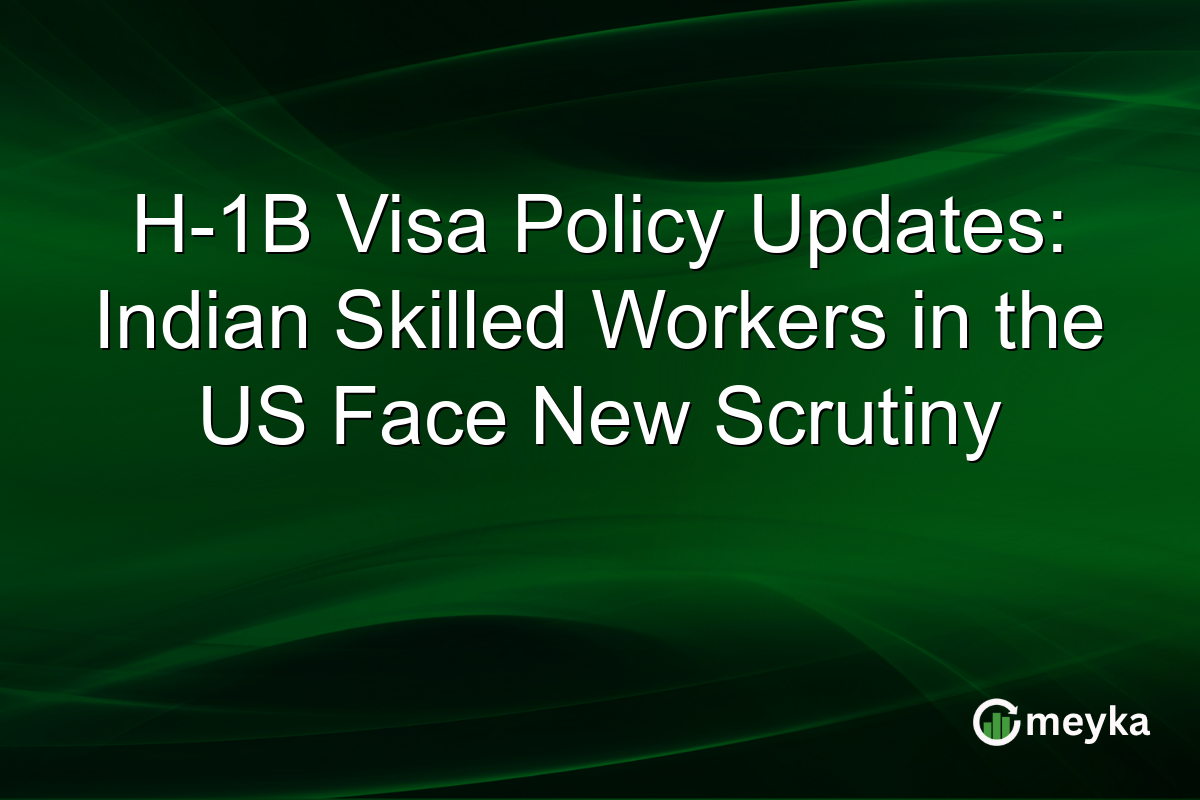H-1B Visa Policy Updates: Indian Skilled Workers in the US Face New Scrutiny
The H-1B visa program has long been a vital pathway for skilled Indian professionals to contribute to the US economy. Recent announcements in H-1B visa news 2025 indicate significant potential changes. These could impact thousands of Indian tech workers and their role in US companies. With scrutiny on eligibility and compliance costs, the implications are profound for both professionals and businesses.
Impact of Proposed Policy Changes
As we evaluate the proposed changes in H-1B visa news 2025, the focus is on stricter eligibility criteria and heightened scrutiny. Indian professionals, who constitute a major portion of H-1B applicants, face uncertainty. Stricter rules may require higher qualification thresholds, leading to fewer approved applications. This shows a shift in US immigration reforms aimed at protecting domestic job markets. For many Indian workers dreaming of a career in the US, these updates might alter plans, impacting personal and professional goals. According to CNBC, these reforms could increase costs for obtaining an H-1B visa, raising affordability issues.
Effects on the US Economy
US companies, especially tech firms, rely heavily on Indian talent. With proposed changes, tech companies face the potential of a talent shortage. About 70% of the H-1B visa holders work in STEM fields, primarily at big tech companies. Concerns are growing about retaining global competitiveness if access to skilled workers diminishes. The proposed policy changes echo broader US immigration reforms aiming for a balanced approach to foreign skills and job protection. For businesses, these reforms mean revisiting hiring strategies and adapting to possible staffing challenges. The balance between maintaining innovation and adhering to new regulations will be critical for growth.
Tech Companies React to New Requirements
Tech companies in the US are particularly vulnerable to these H-1B visa updates. The impact of these reforms is not just limited to potential increases in compliance costs but extends to operational strategies. Companies like Google, Amazon, and others depend on skilled workers from India for roles in software engineering and product development. With increased compliance, companies might shift focus to investing in training domestic workers or relocating positions offshore. According to a Bloomberg report, the changes could push businesses to advocate more aggressively for reform or participate in litigation.
Final Thoughts
In conclusion, the H-1B visa news 2025 heralds comprehensive changes that could reshape the landscape for Indian professionals and US tech industries. Stricter eligibility criteria might limit access, while tech companies could face talent shortages and increased costs. Both sectors will need to rethink their strategies and adapt to the new norms in US immigration policies. Looking ahead, close attention to these developments is essential for stakeholders trying to navigate this evolving arena.
FAQs
The proposed changes focus on stricter eligibility criteria and increased compliance costs. This could limit the number of Indian professionals eligible for the H-1B visa. Companies may also face higher costs in managing their H-1B workforce.
Indian professionals, who make up the majority of H-1B visa holders, may encounter more barriers to obtaining visas. Stricter qualifications and higher fees could deter many from applying.
Tech companies rely heavily on skilled Indian professionals. The changes may lead to talent shortages and operational adjustments. Firms might need to find alternative strategies, such as investing in domestic talent or outsourcing roles.
As of now, these changes are proposed and undergoing the review process. Stakeholders including businesses and immigration advocates are actively voicing concerns and suggestions, hoping for a balanced outcome.
Disclaimer:
This is for information only, not financial advice. Always do your research.






